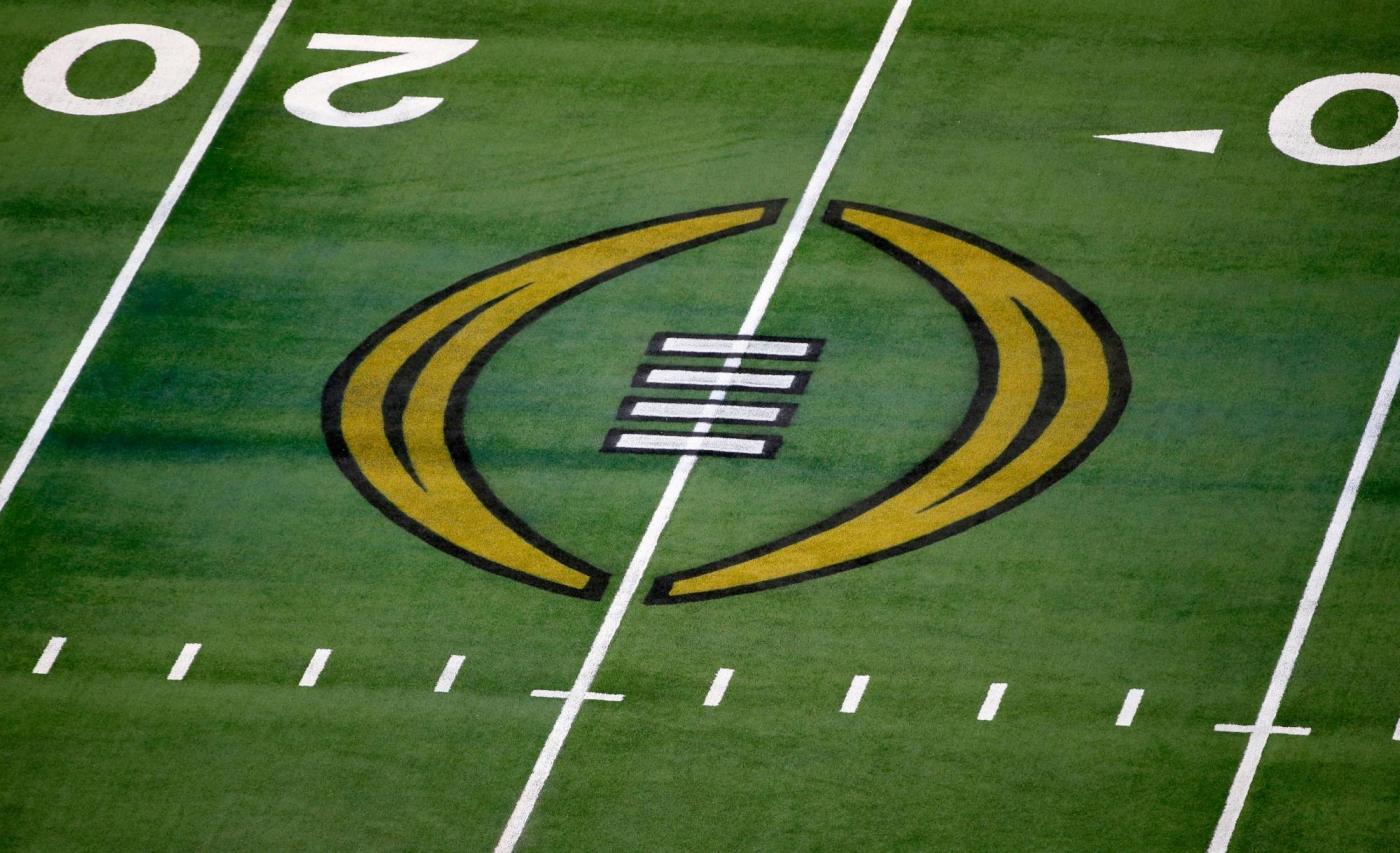The Hotline mailbag publishes weekly. Send questions to [email protected] and include ‘mailbag’ in the subject line. Or hit me on the social media platform X: @WilnerHotline
Some questions have been edited for clarity and brevity.
How do you see the College Football Playoff format debate for the 2026 season getting resolved? — James V
It will be messy — heck, it already is messy. But at some point this fall, the Big Ten and SEC, with input from the ACC and Big 12, will set the CFP format for the 2026 season and beyond.
Will it be 12, 14 or 16 teams? Will it be heavy on automatic bids or at-large slots? Will the selection committee retain its authority or exist in diminished form?
So many questions, so few answers and not much time: The CFP management committee (i.e., conference commissioners) are obligated to give ESPN and answer by December.
It’s only the most controversial issue in college football, with ramifications for the regular season, the competition calendar and even the transfer portal.
For anyone unaware of the specifics, let’s recap the two competing models:
The Big Ten proposed the so-called AQ format in which 13 of the 16 bids would be automatically distributed in a 4-4-2-2-1-3 manner regardless of regular-season success: Four bids for the SEC and Big Ten; two each for the ACC and Big 12; one to the top-ranked champion from the other conferences; and three to at-large teams, with a special pathway for Notre Dame.
The Big 12 and ACC countered with the so-called 5+11 model, in which five spots would be reserved for conference champions and the rest distributed to at-large teams.
The Big Ten proposal limits the role of the selection committee by allowing the conferences to determine how 13 of the 16 teams would advance. As a result, schools seemingly would feel emboldened to play marquee non-conference games, such as an SEC-Big Ten crossover series.
The 5+11 model gives the oft-criticized selection committee more influence than it has now. Instead of picking seven of the 12 teams, it would pick 11 of 16. Among the advocates for 5+11: The SEC, which undoubtedly envisions gobbling six or seven of those at-large slots.
The Hotline sees three possible outcomes with the following likelihoods:
1. At-large format: 45 percent
Backed by SEC commissioner Greg Sankey, arguably the most powerful individual in college sports, the 5+11 format has the best chance to cross the finish line.
It’s effectively an extension of the current model. Instead of the committee selecting seven of 12 teams (58.3 percent), it would pick 11 of 16 (68.8 percent).
It’s easy for the public to understand and accept, because it aligns with the postseason format in the NFL, where only the division winners are guaranteed playoff spots.
And it works for ESPN, the CFP’s media partner, which is wary of any format (e.g., the AQ model) that suggests a predetermined outcome and therefore could undercut viewership.
Consider the following: It’s the 2027 season, and Michigan is upset by Buffalo in the opener; the Wolverines then lose decisively at Texas but rally to grab the Big Ten’s fourth automatic bid despite four (or five) losses. Meanwhile three-loss teams in the ACC and Big 12, which handled non-conference opponents equivalent to Buffalo, are left out.
The playoff would be a laughingstock. Which isn’t good for ESPN’s business.
2. The X factor: 35 percent
With the Big Ten and SEC at loggerheads over the format, don’t discount the potential for a compromise.
Exactly what they would be, we cannot say. One possible option is to grant an automatic bid to the winner of a play-in game featuring the third-place teams from the ACC and Big 12. Some have referred to this approach as the 4-4-2.5-2.5-1-2 model.
It feels a bit complicated and relegates the ACC and Big 12 to second-tier status. But we suspect a third option will receive strong consideration in coming weeks.
3. AQ format: 20 percent
Despite the Big Ten’s immense leverage over the process, and the sport, commissioner Tony Petitti’s proposal has two layers of challenges.
The first is practical: The SEC is opposed; and the ACC and Big 12 simply cannot accept any format in which they are codified as inferior. If performance on the field leaves them with one bid, they live with it. But to willingly accept second-class status would devastate their brands.
The second is philosophical: Awarding playoff bids in advance of the competition season is viewed as too radical by the majority of college football fans. It would be akin to the NFL granting the NFC West two bids before the season.
The Big Ten needed to bring the public along with a detailed explanation of the benefits to the AQ model. Instead, Petitti stayed too quiet for too long and ceded the narrative.
Lastly, we should mention why the situation has reached its current level of complexity: The playoff format is about much more than the playoff. It deeply impacts the manner in which teams (and conferences) build their regular-season schedules.
For example, the Big Ten won’t agree to the at-large model (5+11) unless the SEC adds a ninth conference game, because playing eight is viewed as an significant advantage with a selection model based on at-large bids.
But why would the SEC willingly give up any competitive advantage? The coaches don’t want an extra conference game — they would prefer to play a cupcake in November.
There are other layers to the issue, including the potential for an in-season Big Ten/SEC crossover series that could be damaging to the ACC and Big 12.
The only certainty in this process is the uncertainty. The commissioners must come to an agreement by December.
Until then, it’s a giant, stinkin’ mess.
What is the best the Big 12 and ACC can hope for if the 5+11 playoff model is adopted? If their teams make deep playoff runs, can they expect the SEC and Big Ten to give them more equal footing in the next negotiating window? — @Milkbear79
The situation is so deeply tangled that the Big 12 and ACC would collect more CFP bids over the six-year contract cycle by adopting the Big Ten’s proposal. (It would grant each two bids per year for six years.) Under the 5+11 format, they could be left with just a single bid more often than not.
But again, codifying inferiority is worse than any on-field result, and Yormark doubled down on his strategy earlier this week at Big 12 media days.
The best-case scenario for the ACC and Big 12 using the at-large model is that each conference regularly receives two bids and perhaps a third berth once or twice.
And, of course, the leagues would need to beat SEC and Big Ten opponents in the CFP. Nothing elevates stature like head-to-head wins.
That said, keep this in mind: The CFP contract with ESPN includes a look-in window following the 2027 season.
In theory, stellar results by the Big 12 and ACC in the next few years would give them leverage to negotiate enhanced access in the later years of the contract cycle.
If the Big Ten and SEC are willing to budge.
Isn’t SEC commissioner Greg Sankey using ESPN’s Football Power Index (FPI) to justify staying at eight conference games — a ploy that everyone outside of Dixie should see through? I believe the SEC is a deeper conference than the Big Ten, but isn’t the SEC’s use of biased data simply propaganda? — Jon J
Yes, the SEC is using the FPI data to support its argument to remain at eight conference games and support the 5+11 model.
Yes, ESPN is the SEC’s exclusive rights-holder.
And yes, Sankey is negotiating (both publicly and privately) based on what best serves the SEC.
But everyone is operating out of self interest, from Sankey to Petitti on down.
The entire sport is governed by self interest, with commissioners advocating on behalf of their schools and their media partners.
The Big Ten doesn’t sneeze without permission from Fox. The SEC operates in similar fashion with ESPN by its side. Same with the ACC (ESPN) and the Big 12 (ESPN and Fox). They are all guilty.
So territorial is the sport that there’s zero sense in getting frustrated. Self-interest is baked into every strategic decision and every policy recommendation.
Don’t blame the commissioners. The ethos makes perfect sense given the insatiable need for cash from the media companies and the relentless competition on the field … and at the negotiating table.
Curious whether the Big Ten, SEC and an ACC/Big 12 alliance would consider a 4-4-6-1-1 format, meaning the ACC and Big 12 would generate six combined bids. — Steve G
The question presumes a partnership between the Big 12 and ACC, which would be well short of a formal merger but makes sense on several levels. Their interests are deeply aligned now that the SEC and Big Ten run the sport.
Related Articles
Big 12 media days: BYU’s Sitake on schedule, Deion Sanders on pro rules
Big 12 commish Brett Yormark “doubles down” on 5+11 model for CFP
Big 12 football: Texas Tech, Utah, Iowa State lead our 2025 preseason forecast
CFB weekly recap: Big Ten commish on CFP, Pac-12 expansion & ACC settlement
College football recruiting: Oregon lands Iheanacho, Jackson in huge week
In our view, the two conferences would jump at the chance for six combined bids because it would open a path for either of them to get four — same as the SEC and Big Ten.
Also, the format would avoid inflicting significant brand damage in the manner 4-4-2-2-1-3 could be devastating.
But why would the SEC and Big Ten agree to give six of the 16 bids to conferences they deem as inferior — to a format that would limit their upside?
In both the AQ model proposed by the Big Ten and the at-large model backed by the SEC, the heavyweight leagues have relatively easy paths to five total bids, if not six.
But if the ACC and Big 12 have six slots between them and one at-large berth is crafted for Notre Dame, then the maximum for both the Big Ten and SEC would be … four.
That’s a non-starter for Petitti and Sankey, it seems.
Whatever format is ultimately adopted, the Big Ten and SEC want five bids every year with a manageable chance to grab six.
Can one make the argument that Washington State and Oregon State are better off than Stanford and Cal when you factor in each school’s chances of making the CFP, as well as travel cost and media revenue for 2026 and beyond? — @CelestialMosh
Some might make that case. We won’t.
Stanford and Cal are facing steep competitive and financial challenges in the ACC, while Washington State and Oregon State have navigated the Pac-12 implosion as well as anyone could have possibly imagined.
From a CFP standpoint specifically — and starting with the 2026 season — the Cougars and Beavers would need to win the Pac-12 and finish with a higher ranking than the champions of the American, Sun Belt, MAC, Conference USA and Mountain West.
Meanwhile, the Bears and Cardinal would need to either win the ACC or finish as the clear No. 2 team and, potentially, present a stronger resume than the No. 2 team in the Big 12. (It depends which format is adopted.)
In our view, WSU and OSU have wider, smoother paths into the postseason. Their resources and recruiting prowess compare more favorably to the best of the rebuilt Pac-12 than the Bay Area schools’ resources and recruiting prowess compare to the best of the ACC (i.e., Clemson and Florida State).
But that doesn’t mean the Cougars and Beavers are better off, overall, than the Pac-12 transplants.
The former would trade places with the latter in a nanosecond, and the reverse isn’t remotely true.
*** Send suggestions, comments and tips (confidentiality guaranteed) to [email protected] or call 408-920-5716
*** Follow me on the social media platform X: @WilnerHotline





